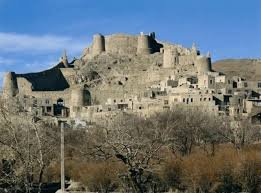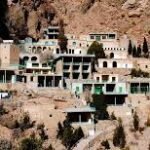Perched atop a narrow rock pinnacle in Iran’s Alborz Mountains, the ruins of Alamut Castle stand as one of history’s most enigmatic strongholds. For nearly two centuries (1090-1256), this seemingly impregnable fortress served as headquarters for the Nizari Ismailis – a Shia sect better known as the Order of Assassins, whose strategic killings of political and religious leaders gave us the modern word “assassin.” The castle’s name, meaning “Eagle’s Nest” in local dialect, perfectly describes its dramatic 200-meter-high cliffside location, accessible only via a single treacherous path that still challenges modern hikers. More than just a military installation, Alamut became the center of an intellectual revolution under Hasan-i Sabbah, blending philosophy, political strategy, and religious doctrine into a potent force that challenged empires. Today, the ruins continue to guard their secrets, with recent archaeological discoveries revealing hidden tunnels, coded inscriptions, and evidence of advanced medieval science that contradict the castle’s popular image as merely a terrorist training ground.
The Architect of Fear: Hasan-i Sabbah’s Masterpiece
Hasan-i Sabbah’s 1090 capture of Alamut remains one of history’s most brilliant military stratagems. Disguised as a religious teacher, he infiltrated the castle for months before secretly converting the garrison. According to Persian chronicles, he seized the fortress without bloodshed by having his followers simultaneously replace all torch flames with green ones – the Ismaili color – overnight, making the garrison believe divine forces favored him. Over the next 35 years, Hasan transformed Alamut into an ideological and military powerhouse through revolutionary innovations:
- A legendary library with works on astronomy, alchemy and philosophy
- A sophisticated water collection system using concealed cisterns
- Psychological warfare techniques including staged “paradise” experiences
- The first documented use of political assassination as systematic policy
His most famous teaching device was the “Leap of Faith” – forcing recruits to jump across a terrifying chasm (with a hidden safety ledge) to prove devotion. Modern engineers have found the castle’s acoustics allowed voices to carry impossibly far, likely used to create “miraculous” effects reinforcing Hasan’s authority.
The Assassin’s Arsenal: Secrets of the Fortress of Alamut Castle
Alamut’s military engineering was centuries ahead of its time. Recent excavations have revealed:
- A 6-story structure carved into the mountain with over 200 rooms
- Hidden archery positions covering every approach angle
- A pulley system for supplying the summit from invisible lower caves
- Poison laboratories (discovered in 2018) with residue of 12 toxic compounds
The castle’s most impressive survival feature was its agricultural terraces – still visible today – that grew cannabis (for hashish, possibly inspiring the “hashashin” name), opium for medicine, and enough food to withstand decade-long sieges. Persian manuscripts describe remarkable siege defenses including burning naphtha pipelines along the walls and a “smoke mirror” communication system that relayed signals across valleys faster than horseback. Most intriguing are the recently decoded architectural markings suggesting some towers were aligned for astronomical observations, possibly creating calendar-based light phenomena to impress visitors.
Alamut Castle: The Paradise Myth and Psychological Warfare
Marco Polo’s account of a secret “Assassin’s paradise garden” at Alamut has long been dismissed as legend, but 21st-century archaeology suggests a kernel of truth. Excavations have uncovered:
- Terraced garden remnants with sophisticated irrigation
- Opium pipe fragments and hashish residue in ceremonial chambers
- Hidden chambers with frescoes of celestial imagery
Historians now believe Hasan created multisensory experiences combining drugs, hypnotic repetition, and staged revelations to indoctrinate fidais (devotees). The famous “paradise” may have been a sealed garden where selected assassins experienced an artificial heaven before missions – explaining their fearlessness. Persian sources describe “hidden rooms where the sun always shone” – possibly using polished copper mirrors to create dazzling light effects in windowless chambers. These psychological manipulations made Alamut’s forces disproportionately effective against larger armies.

The Mongol Conquest and the Library’s Fate
Alamut’s downfall came in 1256 when Hulagu Khan’s Mongol forces besieged the castle with unprecedented siege engines. Rather than fight, the last Imam Rukn al-Din surrendered after negotiating safe passage for his library – a decision that may have preserved Ismaili knowledge. Contemporary accounts describe:
- 400 camel-loads of manuscripts removed before destruction
- Secret tunnels used to spirit away core texts to India
- The Mongols finding empty weapon caches and stripped rooms
Legend claims Hulagu, expecting vast treasure, found only philosophical texts and astronomical instruments. In a bizarre twist, Persian historians report the conqueror became obsessed with the castle’s secrets, keeping Assassin scholars as advisors. The ruins were systematically destroyed, but recent Lidar scans reveal intact subterranean chambers possibly holding surviving artifacts.
The Rediscovery and Archaeological Mysteries
European explorers first documented the ruins in 1833, but serious archaeology only began in the 1960s. Key findings include:
- 2012 discovery of Hasan’s original “seat of power” – an oriented stone chair controlling castle mechanisms
- 2015 unearthing of a coded “wall calendar” tracking solstices
- 2020 thermal imaging revealing an intact chamber beneath the main tower
Most puzzling is the “Alamut Cube” – a perfect stone block covered in mathematical carvings found in 2017 that appears to be an advanced calculating device. Ongoing excavations continue to uncover evidence contradicting medieval propaganda about the Assassins, including medical instruments suggesting sophisticated healthcare and musical instruments indicating a vibrant cultural life.
Modern Pilgrimage and Cultural Legacy
Today, Alamut draws historians, gamers (inspiring Assassin’s Creed), and Ismaili pilgrims commemorating their spiritual heritage. The challenging 3-hour hike to the summit passes:
- The original “Leap of Faith” gorge (now with safety rails)
- Carved niches where sentries monitored all travelers
- The recently restored “Gate of Wisdom” with its calligraphy
June visitors might witness the summer solstice alignment when sunlight passes through a special arrow slit to illuminate the throne platform. The nearby Alamut Valley eco-tourism project offers castle-view accommodations and guided treks to lesser-known Nizari fortresses like Lambsar.
The Truth Behind the Legends of Alamut Castle
Modern scholarship is separating Alamut’s fact from fiction:
- The “hashish” connection likely stems from political slander
- Actual assassinations were highly selective, averaging one per two years
- The order operated more like a state than a cult, with taxes and diplomacy
Recent translations of surviving Ismaili texts reveal sophisticated governance theories and scientific advancements that flowed from Alamut to influence Renaissance Europe. The castle’s true legacy may be as a center of intellectual resistance against medieval dogmatism rather than just a terrorist base.
Standing atop Alamut’s windswept ruins, one sees why this fortress captivated imaginations for centuries. More than stone and mortar, it represents the power of ideas – and how a determined few in an unconquerable eyrie could shape the course of empires. As archaeologists continue uncovering its secrets, Alamut reminds us that history is rarely as simple as legend portrays, and that even the most feared places can hold unexpected wisdom waiting to be rediscovered.
Go to main page


